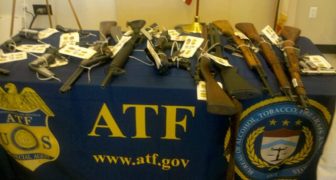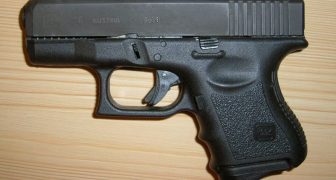If you have made the decision to apply for your conceal and carry permit, there are certain steps you should take after the permit is issued to ensure not only your own safety, but the safety of those around you.
Let’s discuss the 10 most common mistakes that people with conceal and carry permits make.
- Training
- Requirements
When you have been issued a permit to carry a concealed weapon, you are agreeing to abide by all the laws and rules that are attached to that permit. One of the habits you should get into is to make sure you have your concealed carry permit on you at all times. You wouldn’t think of leaving your home without your driver’s license. Apply that same standard to your concealed carry permit. If for any reason a police officer asks to see your permit, you are required to produce it.
- Restrictions
Every state has their own carry and conceal weapon laws. Having a permit in your own state does not mean you can go automatically travel into another state with a concealed weapon. Whether or not you bought your firearm at a licensed distributor or you built something at home utilizing AR-15 components or any other 80% finished parts, you’ll need to know the restrictions and regulations of any state or territory you’re traveling in. There are also locations that forbid firearms, even with a permit, including all federal building and properties. Other locations include:
- Municipal and state buildings, including courthouses;
- Law enforcement facilities, including jails and prisons;
- Transportation (planes, trains, buses)
- Schools;
- Entertainment venues (i.e. sports arenas, amusement parks, concert halls, etc.);
- Know the Meaning of “Conceal”
- Holsters
The holster you use is critical to safety. Do not buy a holster for its looks or because the price is right. You need a holster that will protect the trigger guard and provide tight retention. Look for a holster that will mold to your gun in order to ensure both security and comfort. Experiment with different styles until you find the one that works best for you. A good idea is to practice wearing the holster during the day before you even begin carrying your weapon.
- Drawing and Reholstering
Once you have found your perfect holster, you should make sure that you are comfortable with drawing it and reholstering your firearm. Before you begin practicing, make sure the gun is unloaded. It is also a good idea to practice drawing and reholstering at the range where you can follow through with aiming and shooting at a target after you draw.
- Checking the Gun
A mistake many people who first get their permit to conceal and carry make is constantly checking or fingering their gun. Some nonchalantly reach and feel for the weapon to make sure it is still there. Others check out in the open for anyone to see. This is a dangerous habit to get into and one that you need to break quickly. If you have purchased the correct holster, the gun is not going anywhere unless you draw.
- Publicly Adjusting the Holster
Another dangerous habit is adjusting the holster in public. Sometimes if you move in a certain way, the holster may need to be readjusted. If this happens, make sure to go somewhere that is private and does not have security cameras. Do not do it in public where you are openly advertising you have a weapon on you.
- Ammunition
Removing Your Weapon
Keep your weapon on you at all times. Do not take your gun off and put in under the seat of your vehicle or in your glovebox. Don’t put your weapon in a purse or backpack. Not only does this leave your weapon not readily accessible, you also risk the gun getting lost or stolen.
About the author
Kurt Darrell is a freelance writer based in Atlanta, Georgia. He’s just a guy who wants to research about things and write content about it. He is also working on his personal cannabis blog and his life and wellness blog that he will be publishing soon.

Speak Your Mind